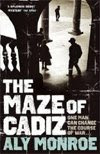Our seventeen-month-old grandson lives in Madrid and, in between visits, we have been having regular Skype sessions, chatting, singing songs and playing games. His initial reaction to these sessions was intrigue. He began offering us toys or water through the computer screen and going into gales of laughter when we pretended to take them. On a recent visit with his parents – escaping from the heat of Madrid – he arrived and immediately initiated a game and requested songs that we had introduced on screen. He seemed to have no problem accepting that the flesh and blood version of his grandparents was the same as the image on his mother’s computer screen.
He’s at that language-sticky phase – delighted to find out that everyone and everything has a name. There are shapes and colours to this. Anything remotely round was put into the ‘ball’ category, anything green was a tree, and anything with wheels was a car.
Among his recent acquisitions were the first four of the Ladybird Key Words Reading books - with protagonists, for those that don’t remember, called Peter and Jane. I taught my children to read with these books (we were living in Spain at the time) and my daughter is thinking ahead. First produced in the sixties, they are brilliantly designed – following research into word frequency - using the commonest words in the English language, and a mixed method of repetition, look-and-say, context, and inbuilt phonic training – and they really work.

The first books had a distinctly fifties feel, but over the years the pictures were modernised. Jane’s attire was changed from prim dresses to jeans and a T-shirt, and the elderly absurdity of sentences such as ‘Peter climbs a tree while Jane looks on’ or ‘A woman likes a hat’ was also addressed.
One of these books immediately grabbed my grandson’s attention. The pictures were full of things he could put names to – ball, fish, tree, dog, water, jump, splash etc. He took to Jane immediately. Shortly before leaving to go back to Madrid, he was standing at the window looking out onto the gardens opposite. A girl with shoulder-length blond hair was playing with a dog. She looked remarkably like ... yes, you’ve got it. ‘Jane!’ said the little lad, pointing excitedly.
‘Ah,’ said his uncle. ‘The beginnings of an inquiry into the dimensions of fiction and reality.’

Nothing quite so grand – but probably more interesting. On a later visit to his other grandparents, he was introduced to a cow – a real one, not a plastic, one-inch-tall one. The cow did indeed go ‘mooo!’ but more like a foghorn than he was used to. He apparently achieved almost vertical movement into his mother’s arms and squinted a bit – I am guessing to bring the cow into less threatening focus.
And just in case anyone is wondering, Jane’s brother was never, ever, the inspiration for Peter Cotton.







